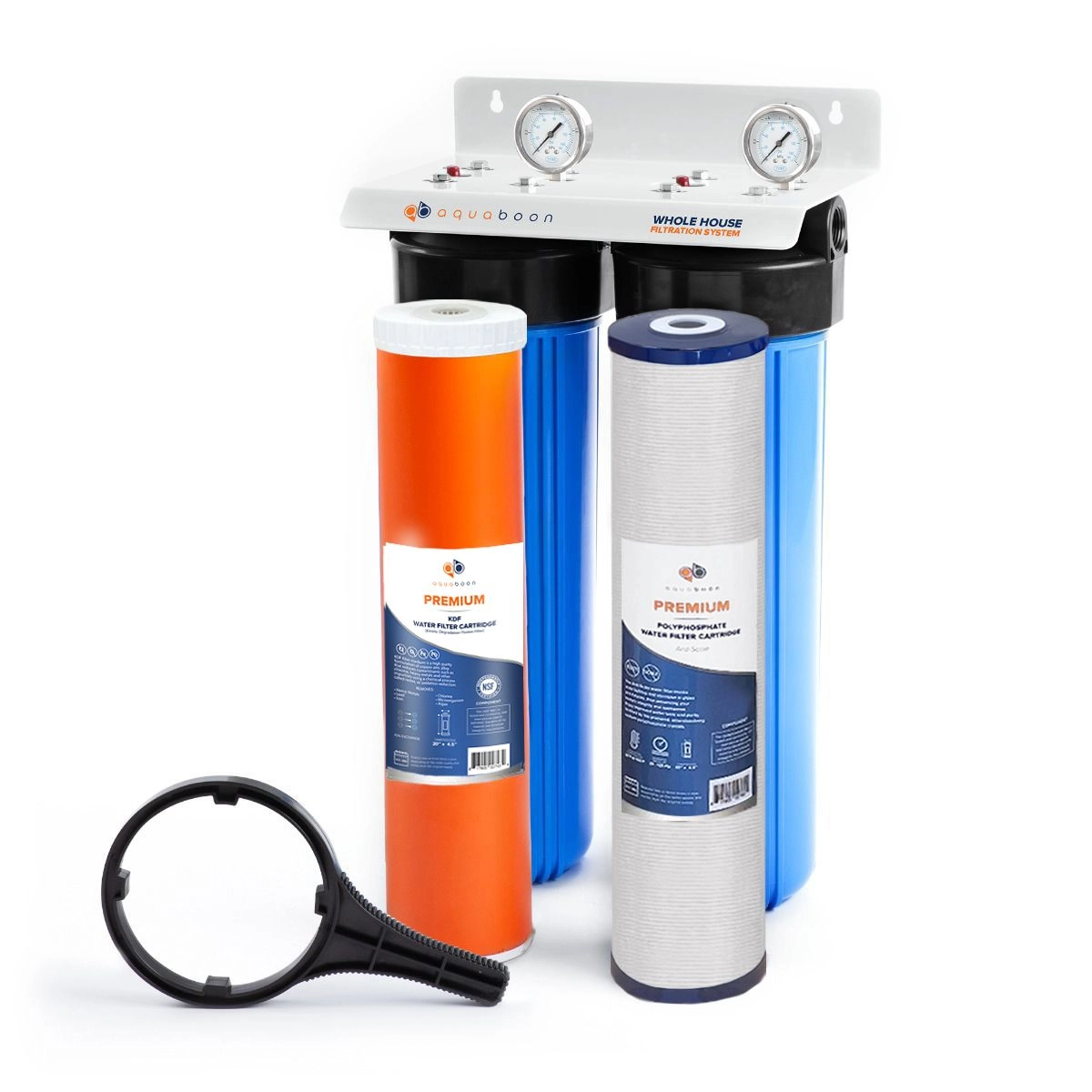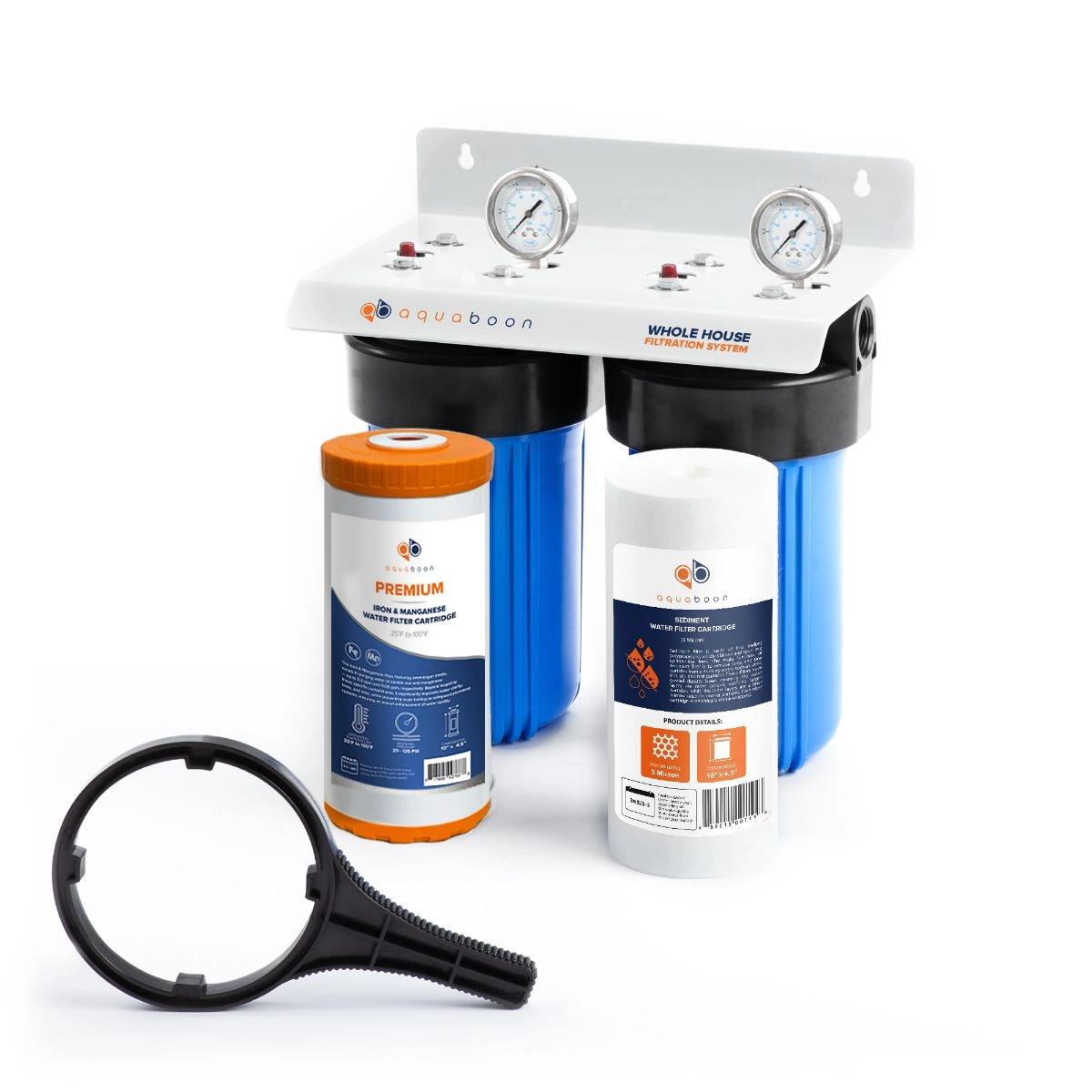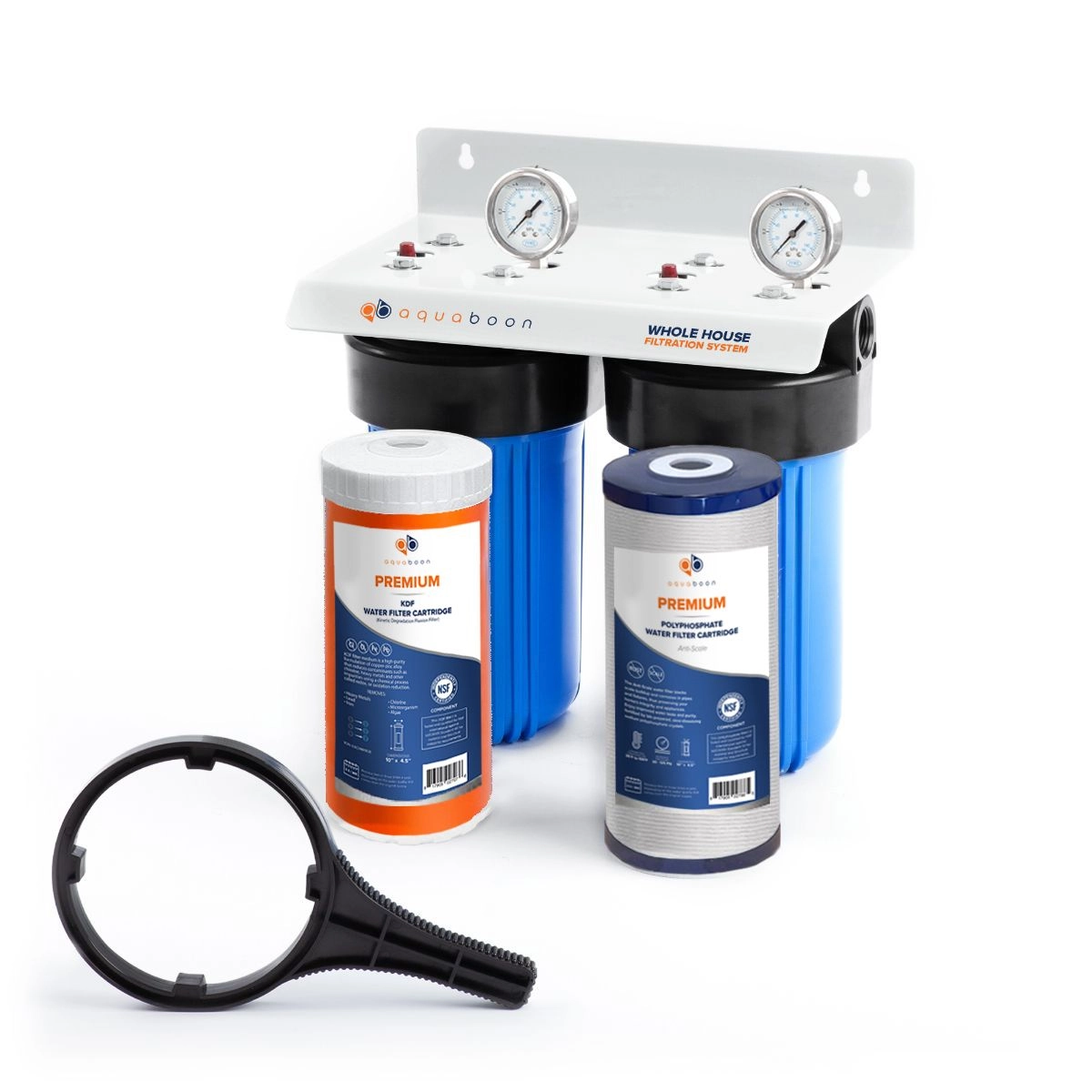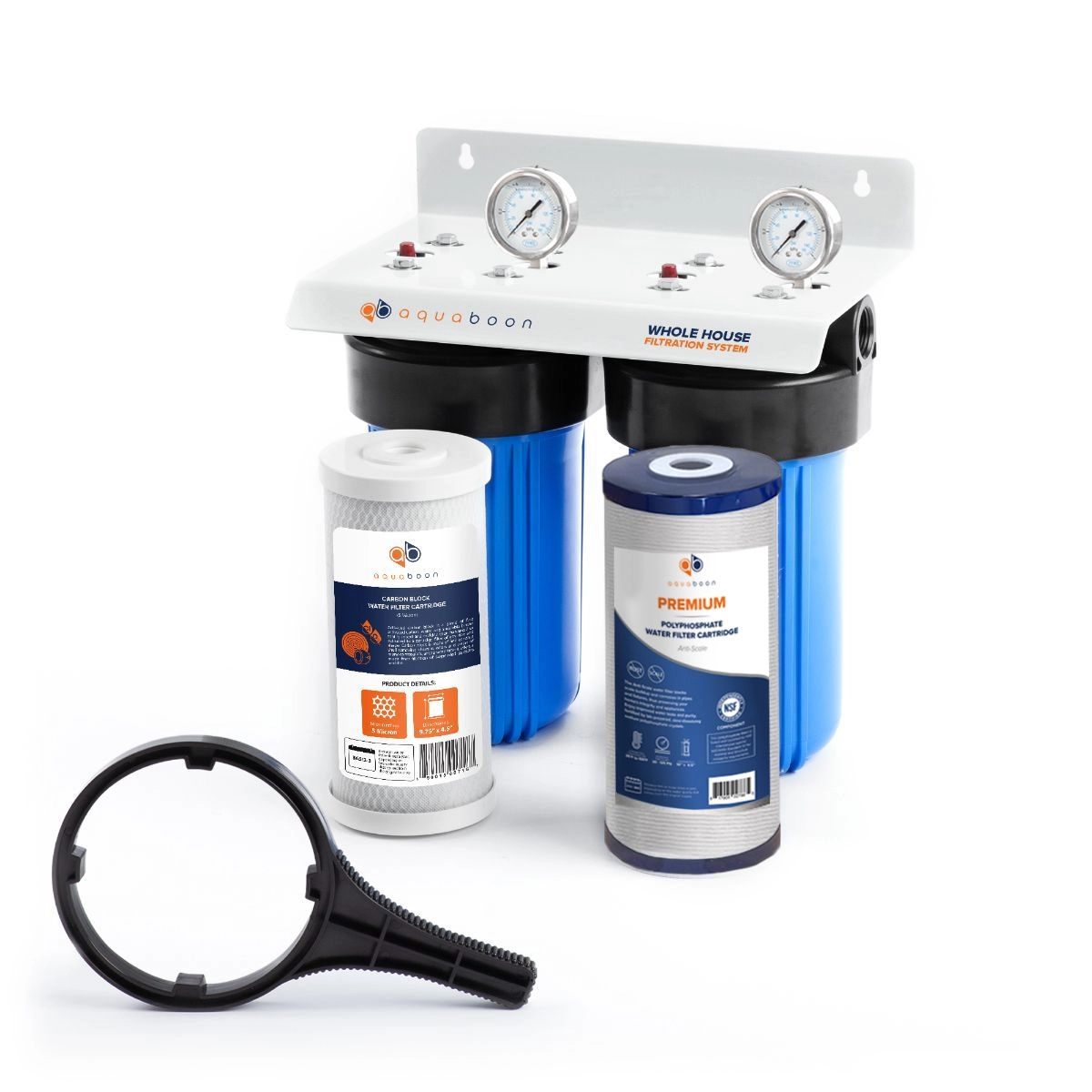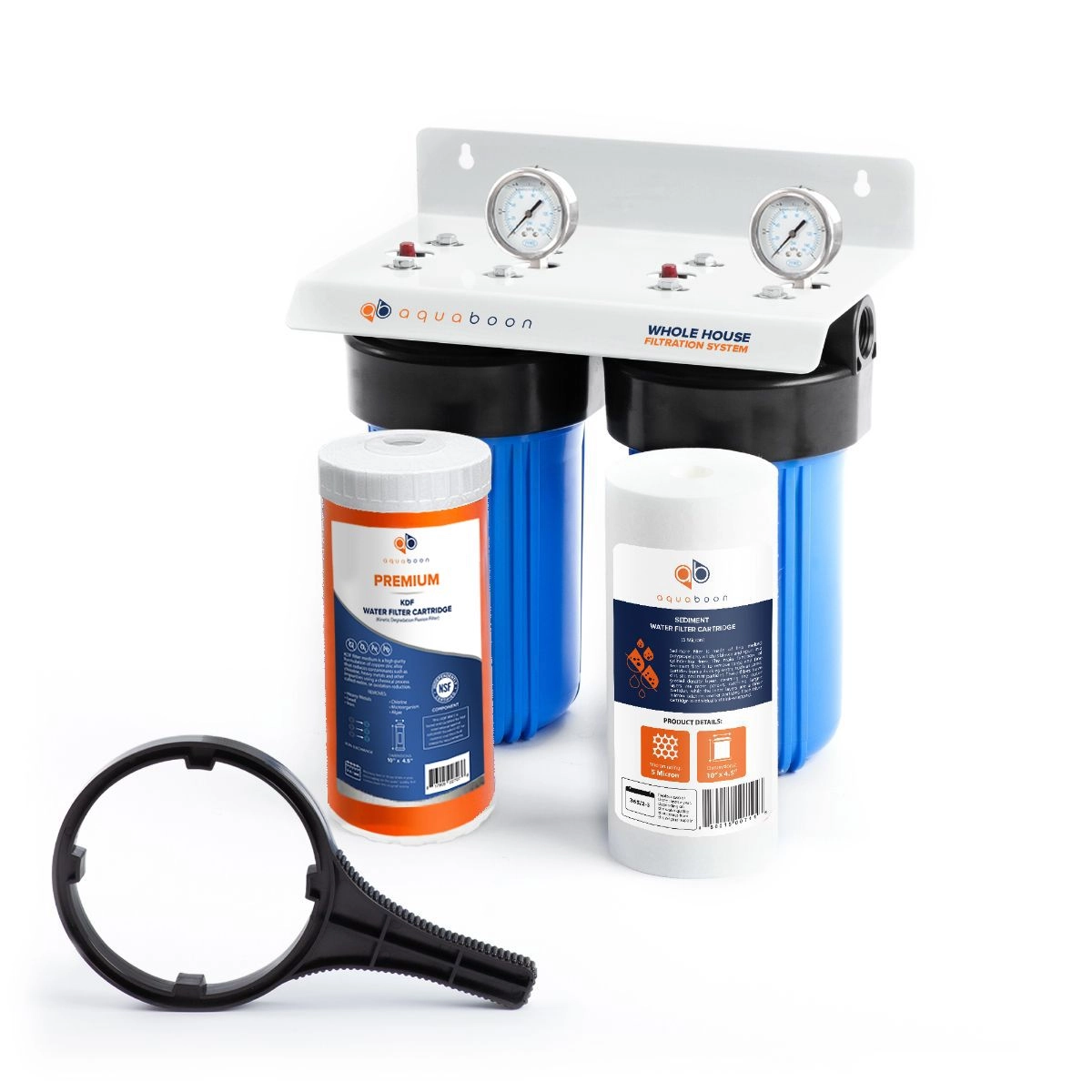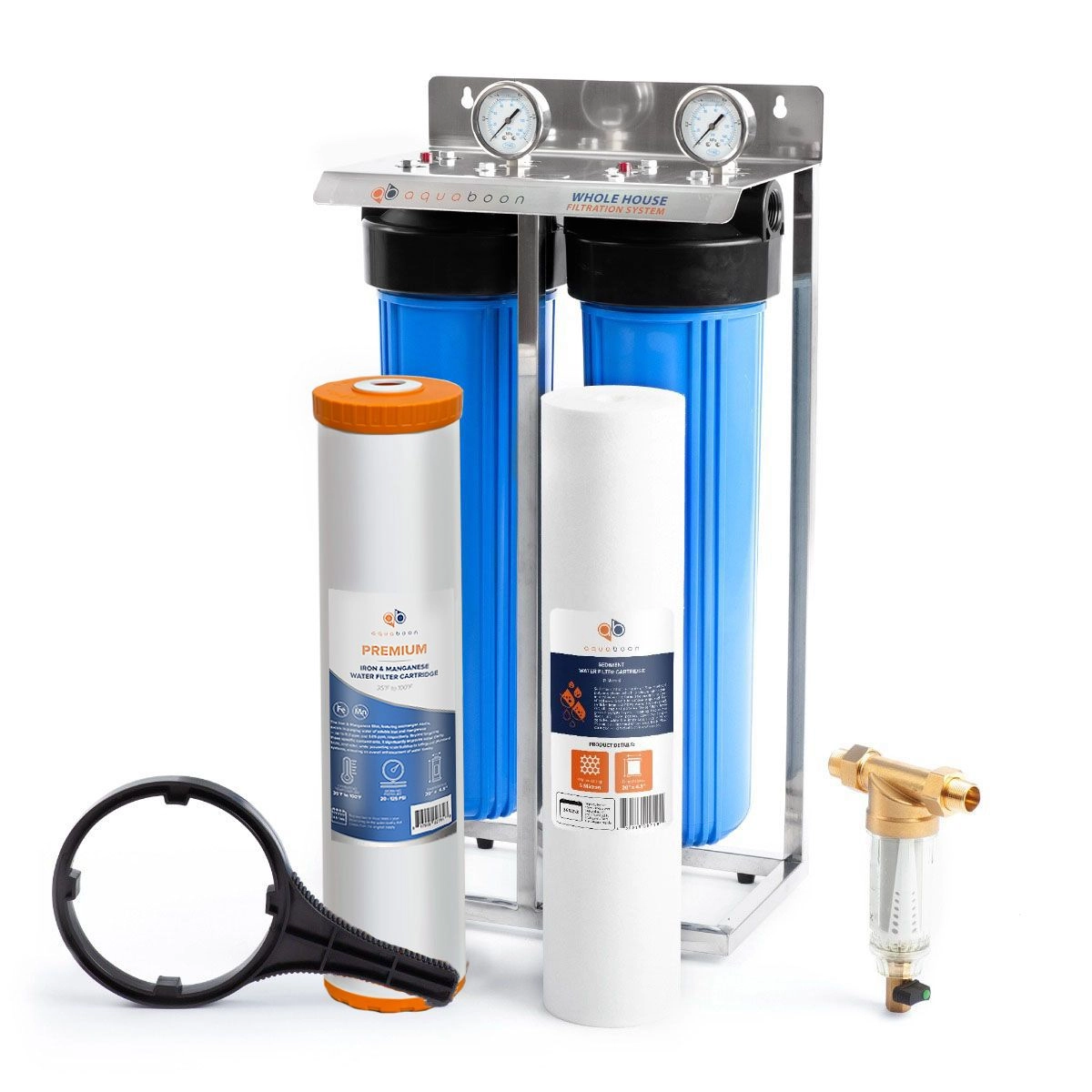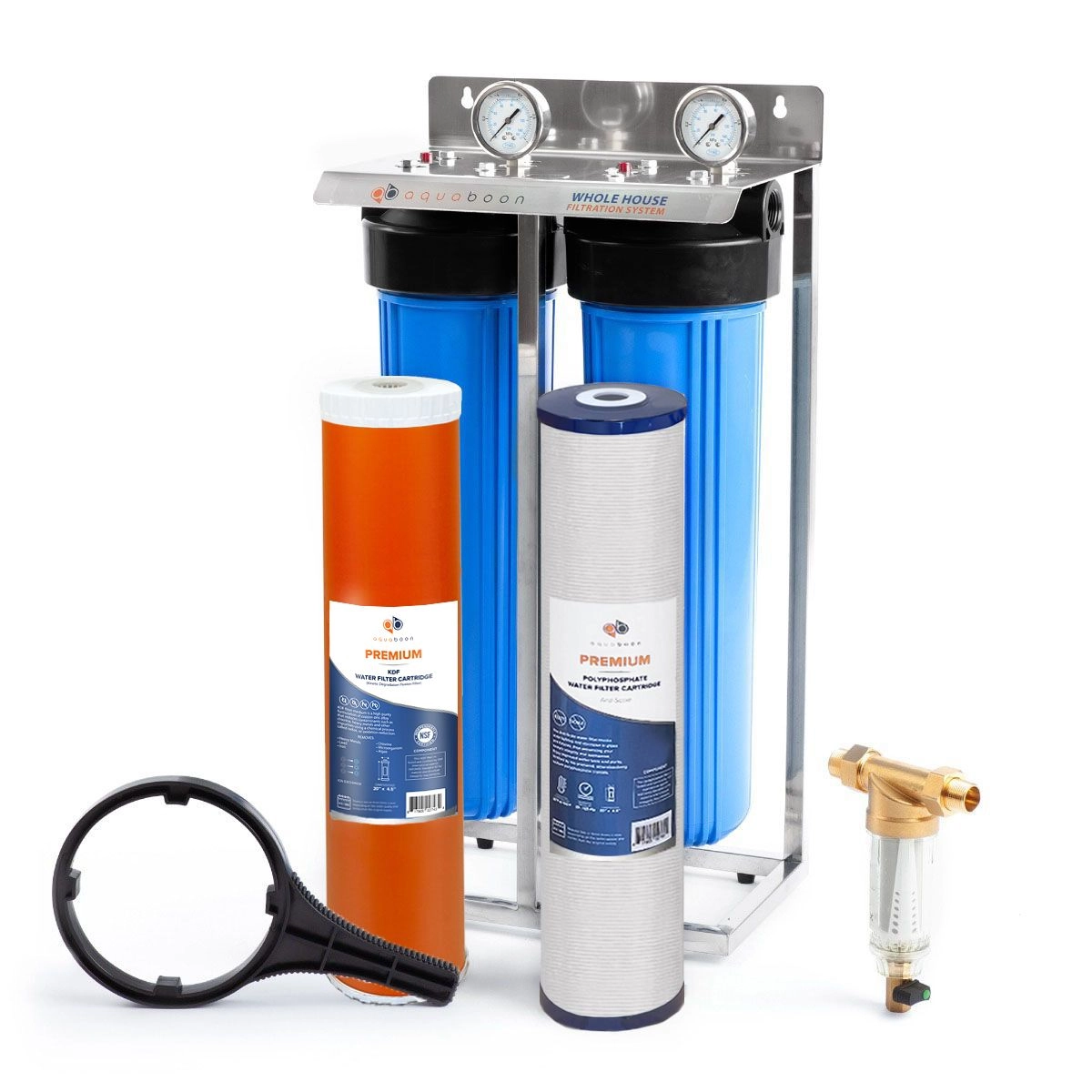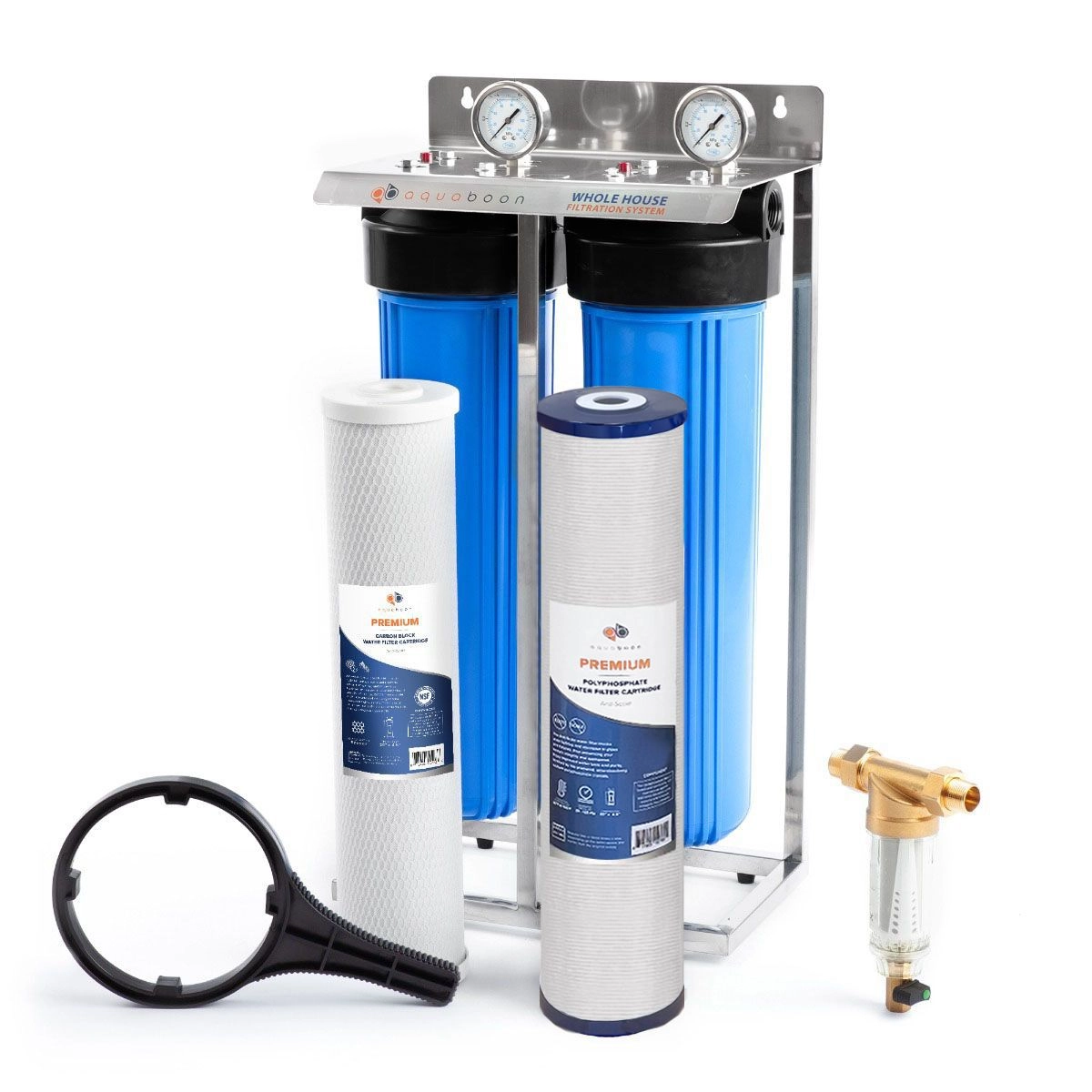Whole House Water Filters Buying Guide
Municipal water is generally closely regulated and safe. However, according to the CDC, it can still contain trace contaminants that are dangerous to health. Therefore, you have to take additional steps to ensure that your water is safe to consume — and an effective way to do this is by installing a whole house water filtration system.
This type of filtration system eliminates contaminants before they enter your indoor plumbing, providing clean water for all your needs.
In this guide, we’ll cover some essential points to consider when choosing whole house water filters, so that you can start enjoying safe water in your home.
Read on.
What Is a Whole House Water Filter?
A whole house water filter is a purification device installed at the main line where water enters a house. Its purpose is to filter and treat the water before it gets distributed into your home, ensuring the water that flows from every faucet is clean and safe for consumption.
If you're looking for how to improve the quality of what you drink, this whole house water filters buying guide will point you in the right direction.
How Does a Whole House Water Filter Work?
Most WH filtration systems work via a three-step process. First, a sediment pre-filter removes larger particles, then an activated carbon filter treats the water, and finally, a post-filter does a final cleaning and polishing.
Pre-filter step: The first stage of a whole house filtration system is usually a sediment filter. It is designed to remove large particles like dirt, sand, and debris from the drinking supply. This helps to prevent clogging.
Carbon filtration: A carbon filter system is typically used as the second stage in a whole-house filtration system. Activated carbon eliminates chlorine, poor taste, and odor from water. Volatile organic compounds (VOCs) and some chemicals can also be removed.
Post-filter stage: Post-filters employ strong, multilayer mesh screens to improve the quality even more. It basically serves as a finishing agent, capturing any leftover silt and organic particles before it passes through your pipes.
The purified result is then distributed throughout the home via the main plumbing line. All of the house's faucets will have clean, safe water — in the kitchen, bath, shower, and everywhere. You can even take things a step further by investing in water filters for refrigerators. This could qualify as your home's second line of defense.
Types of Whole House Water Filters
There are a few different types of whole-house filtration devices available on the market today. The most popular ones are:
Sediment Filters
Sediment filtration devices are the most basic type of whole house filtration systems and are the most common. These devices use cartridges or mesh filters to remove particles such as dirt, sediment, sand, and rust from a household’s drinking supply. They are often used as the first stage in a multi-stage whole house filtration system to eliminate common home water problems.
Activated Carbon Filters
This filter works to not only remove particles such as sand and silt, but also volatile organic compounds (VOCs), and certain pesticides. Activated carbon filters are excellent for both chlorine reduction and taste and odor reduction. They are often used as the second stage in a multi-stage whole-house filtration system.
Catalytic Carbon
Catalytic carbon filters are specifically made to eliminate chloramines and hydrogen sulfide. Chloramine is commonly used to treat drinking water by municipalities. It can be dangerous to your health when ingested in high quantities.
Reverse Osmosis (RO) Filters
Reverse osmosis removes dissolved solids, minerals, and other contaminants from the drinking supply using a semi-permeable membrane. RO removes as much as 99 percent of contaminants. They are more expensive than other types, though.
Ultraviolet (UV) Filters
In UV filtration, microorganisms, bacteria, and parasites are killed by ultraviolet light. This process is also referred to as UV disinfection or irradiation. UV filtering systems can be used independently. It is best, however, to pair them with other systems.




